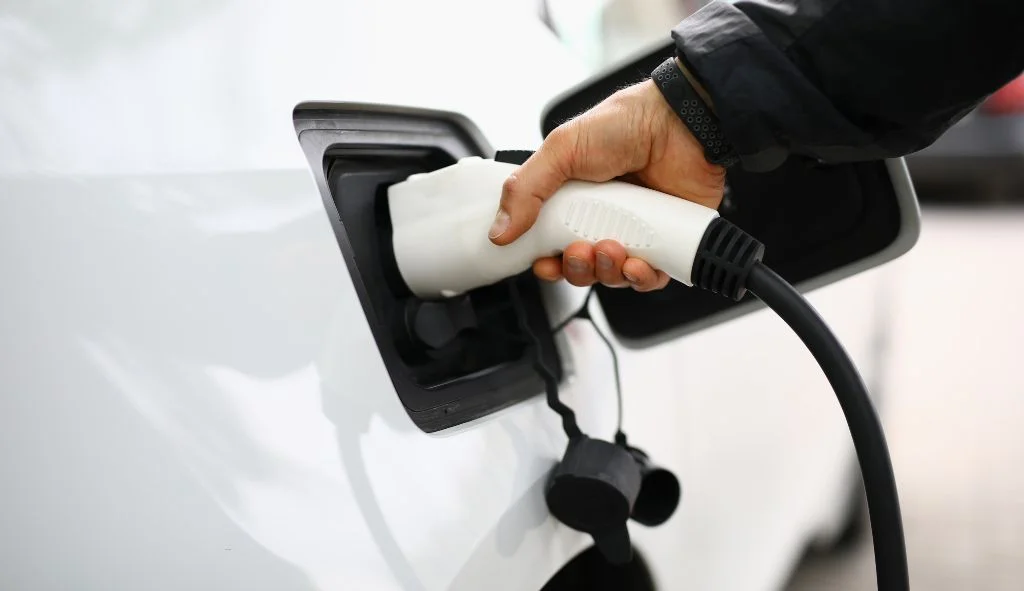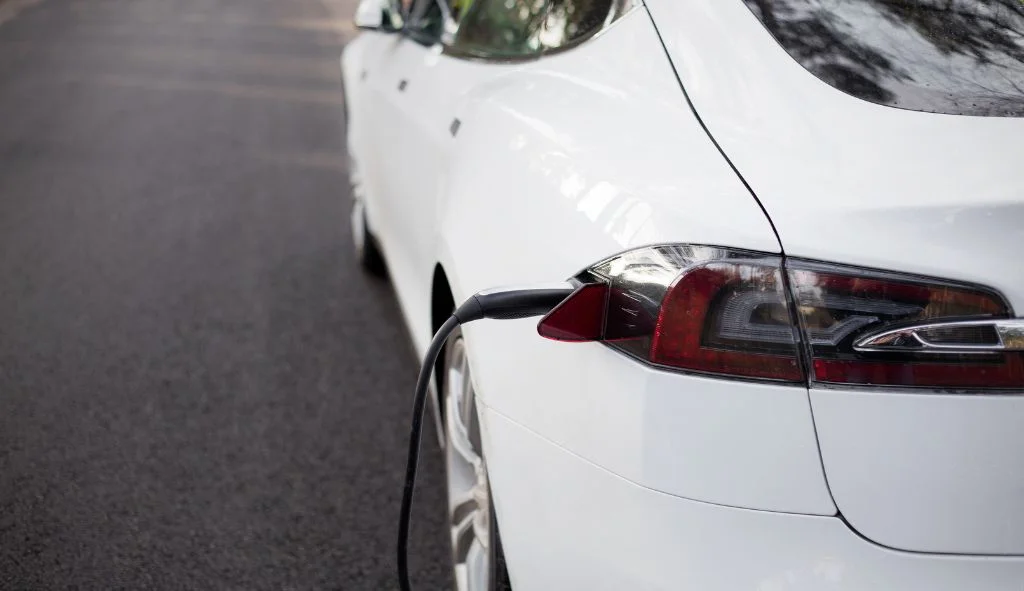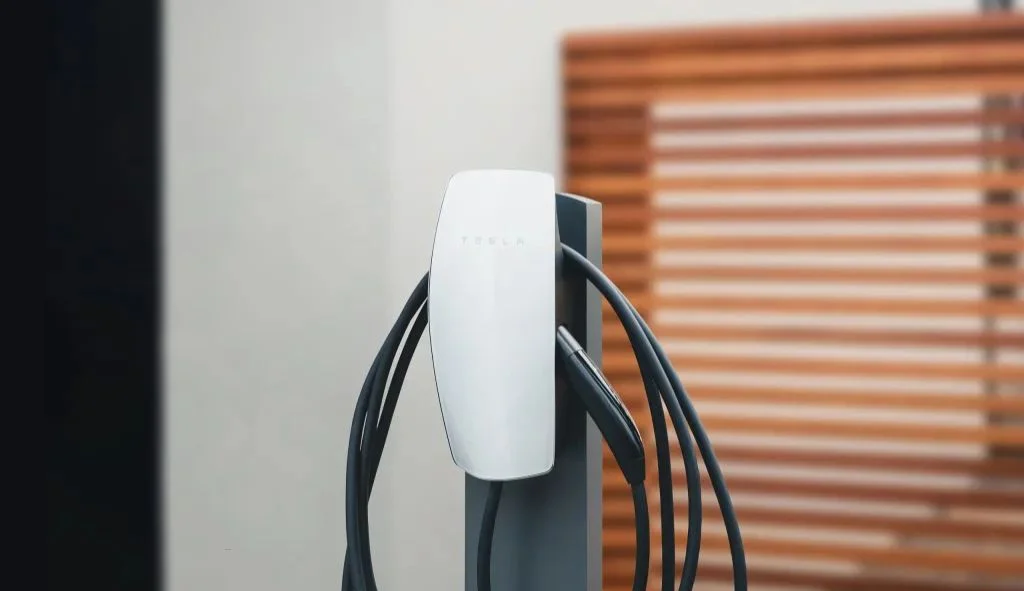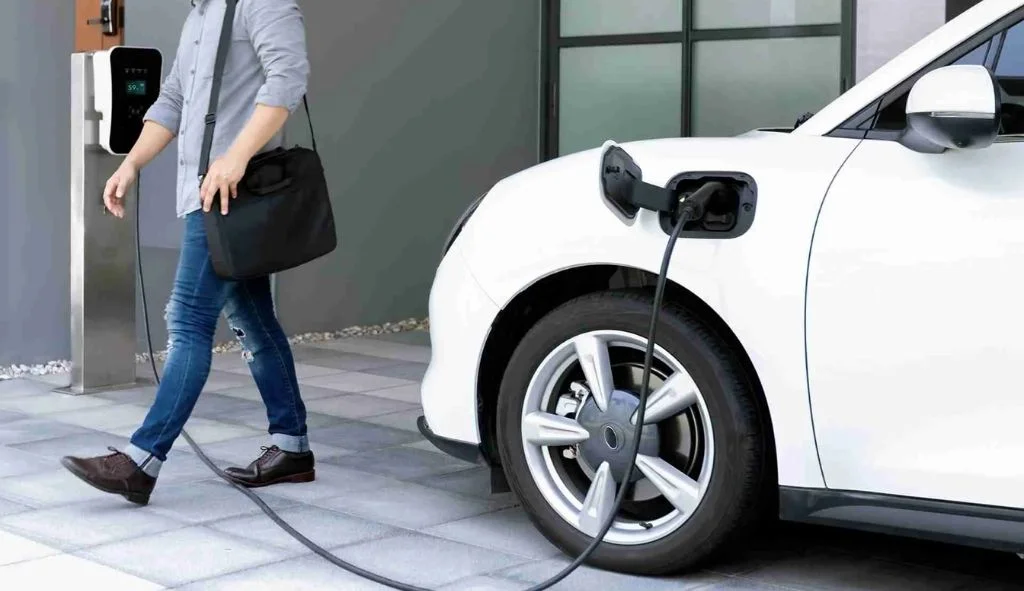You can charge a Tesla at home without a wall connector by using the Mobile Connector with a standard 120V outlet or 240V outlet with appropriate adapters, providing 3-30 miles of range per hour.
Understanding Tesla Home Charging Basics
When you purchase a Tesla, one of the first questions you might have is how to charge it at home. While Tesla offers a Wall Connector as their premium home charging solution, many owners charge their vehicles without it. Tesla vehicles can be charged using various methods, each with different charging speeds and installation requirements.
Tesla classifies charging into three levels. Level 1 is the standard household outlet charging (120V), which is the slowest. Level 2 includes 240V outlets and Wall Connectors, providing medium to fast charging speeds. Level 3 refers to Superchargers, designed for rapid charging during road trips.
For home charging without a Wall Connector, you have two main options: using a standard 120V outlet or installing a 240V outlet for faster charging. Both options use the Mobile Connector, which comes with your Tesla or can be purchased separately.
What Equipment Do You Need?
To charge your Tesla at home without a Wall Connector, you’ll need:
- Tesla Mobile Connector: This portable charging device allows you to connect your Tesla to electrical outlets.
- Adapters: The Mobile Connector comes with a standard NEMA 5-15 adapter for 120V outlets. Additional adapters for different outlet types can be purchased separately.
- Access to an electrical outlet: Either a standard 120V outlet or a 240V outlet, depending on your charging needs.
The Mobile Connector is designed with safety features including automatic shutoff, overload protection, and adjustable amperage settings. It’s approximately 20 feet long, giving you flexibility in where you park your vehicle relative to your outlet.
Charging Speeds Comparison
Understanding the charging speeds of different options helps you determine what’s best for your situation:
| Charging Method | Charging Speed | Installation Cost |
|---|---|---|
| Standard 120V Outlet (Mobile Connector) | 2-3 miles per hour | $0 (existing outlet) |
| 240V Outlet (Mobile Connector with adapter) | Up to 30 miles per hour | $200-$1,000 |
| Wall Connector | Up to 44 miles per hour | $750-$1,500+ |
As you can see, while the Wall Connector offers the fastest charging speed, the Mobile Connector with appropriate outlets can provide sufficient charging for many Tesla owners at a lower installation cost.
Using the Tesla Mobile Connector
The Tesla Mobile Connector is the key to charging your Tesla at home without a Wall Connector. It’s a portable device that connects your vehicle to various power sources, making it an essential tool for Tesla owners.
What is the Tesla Mobile Connector?
The Tesla Mobile Connector is a compact charging device that allows you to charge your electric vehicle wherever a compatible power source is available. It comes with interchangeable adapters to accommodate different outlet types, providing flexibility in charging locations.
The Mobile Connector includes safety features like automatic shutoff and overload protection. It’s designed to be portable, making it perfect for charging at home or while traveling. The connector is approximately 6 meters (20 feet) long, allowing you to park near an outlet without needing to be extremely close.
When purchasing a Tesla, the Mobile Connector was previously included with the vehicle, though Tesla now sells it separately for about $300. The bundle typically includes the connector, a storage bag, and the NEMA 5-15 adapter for standard household outlets.
Mobile Connector Specifications
The Tesla Mobile Connector has specific power requirements and capabilities:
- Voltage requirements: 230 volts (single phase) or 230/400 volt (3 phase) AC power
- Minimum single-phase current: up to 10A
- Maximum charging power: up to 40 amps (depending on the outlet and configuration)
- Cable length: approximately 20 feet
- Compatibility: All Tesla models (Model 3, Model Y, Model S, Model X)
The connector should be used with a properly grounded and dedicated circuit. For optimal performance, Tesla recommends using a separate outlet with only one socket to avoid overloading.
Setup and Installation
Setting up the Mobile Connector is straightforward:
- Plug the appropriate adapter into the Mobile Connector
- Connect the adapter end to a compatible wall outlet
- Connect the other end to your car’s charge port
- Monitor the charging process via your car’s touchscreen or the Tesla mobile app
If you’re using a 240V outlet, you’ll need the appropriate adapter, which may be sold separately. This allows you to draw more power and significantly speed up the charging process.
The Mobile Connector is designed for both indoor and outdoor use, though it’s important to follow safety guidelines when using it outdoors, especially in adverse weather conditions.

Charging with a Standard 120V Outlet (Level 1)
The most accessible way to charge your Tesla at home without a Wall Connector is by using a standard 120V household outlet. This method requires no additional installation and uses the Mobile Connector with the NEMA 5-15 adapter that typically comes with it.
How to Use a Standard Outlet for Tesla Charging?
Using a standard outlet for charging your Tesla is simple:
- Locate a convenient 120V outlet near your parking space
- Attach the NEMA 5-15 adapter to your Mobile Connector
- Plug the adapter into the outlet
- Connect the other end of the Mobile Connector to your Tesla’s charging port
- Your Tesla will begin charging automatically
You can monitor the charging progress through your vehicle’s touchscreen or the Tesla mobile app. The app shows important information such as charging speed, estimated completion time, and current battery level.
Charging Speed and Practicality
When using a standard 120V outlet, your Tesla will charge at approximately 2-3 miles of range per hour. While this is significantly slower than other charging methods, it can be sufficient depending on your driving habits.
For example, if you plug in your Tesla overnight for 12 hours, you can gain about 24-36 miles of range. For someone who drives less than this amount daily, a standard outlet might be adequate for their charging needs.
As one Tesla owner humorously described it, charging with a 120V outlet is “about as practical as refilling a gas car’s tank with an eyedropper.” However, since the average person in the US drives about 37 miles per day, overnight charging can often replenish what’s used during typical daily driving.
Is Standard Outlet Charging Right for You?
Standard outlet charging might be suitable if:
- You drive less than 30-40 miles per day
- You have long periods when your car is parked (overnight)
- You have access to other charging options (workplace charging, Superchargers) when needed
- You want to avoid installation costs for higher-powered charging options
Many Tesla owners on forums report successfully using standard outlets as their primary charging method, especially those who work from home or have shorter commutes. One owner mentioned, “I’ve been using 120V for 12 months just fine. Gets about 30% overnight.”
However, if you regularly drive more than what can be replenished overnight or need the flexibility of faster charging, you might want to consider upgrading to a 240V outlet.
Upgrading to 240V Outlets (Level 2)
For faster home charging without installing a Wall Connector, upgrading to a 240V outlet is an excellent middle-ground solution. This option provides significantly faster charging than a standard 120V outlet while avoiding the full cost of a Wall Connector installation.
Types of 240V Outlets for Tesla Charging
Several types of 240V outlets can be used with the Tesla Mobile Connector:
- NEMA 14-50: The most popular 240V outlet for Tesla charging, often used for electric ranges and dryers. It provides up to 30-32 miles of range per hour.
- NEMA 6-50: Common for welding equipment and other workshop tools, providing similar charging speeds to the 14-50.
- NEMA 10-30/14-30: Typically used for dryers, these provide about 22 miles of range per hour.
- NEMA 6-20: A less common 240V outlet that provides about 15 miles of range per hour.
Each outlet type requires a specific adapter for your Mobile Connector, which can be purchased from Tesla’s online store.
Installation Considerations
Installing a 240V outlet typically involves:
- Hiring a licensed electrician (recommended)
- Checking your home’s electrical panel capacity
- Obtaining necessary permits (varies by location)
- Installing the outlet near your parking space
- Having the installation inspected (often required by local codes)
The cost for installing a 240V outlet ranges from $200 to $1,000 depending on your electrical panel’s capacity, the distance from the panel to the installation location, and local labor rates. While more expensive than using an existing 120V outlet, it’s generally less costly than installing a Wall Connector, which involves similar electrical work plus the cost of the Wall Connector itself ($420).
Charging Speed and Practicality
With a 240V outlet and the appropriate adapter, your Tesla can charge at these approximate rates:
- NEMA 14-50 (50 amp circuit): Up to 30 miles of range per hour
- NEMA 6-50 (50 amp circuit): Up to 30 miles of range per hour
- NEMA 14-30 (30 amp circuit): Up to 22 miles of range per hour
- NEMA 6-20 (20 amp circuit): Up to 15 miles of range per hour
For most Tesla owners, a NEMA 14-50 outlet provides an ideal balance of charging speed and installation cost. At 30 miles per hour, an 8-hour overnight charge can add 240 miles of range-enough to fully recharge most daily driving.
Many Tesla owners report that the Mobile Connector with a 240V outlet meets their charging needs without requiring a Wall Connector. As one owner stated, “Nobody actually needs a wall charger at home, the mobile charger with a 240V outlet is nearly as fast.”
Is Charging Without a Wall Connector Right for You?
Deciding whether to charge your Tesla without a Wall Connector depends on several factors including your driving habits, home electrical setup, and budget considerations. This section helps you determine the best approach for your situation.
Assessing Your Driving Habits
Your daily driving distance is the most important factor in deciding which charging method suits you:
- Less than 30-40 miles per day: A standard 120V outlet might be sufficient, especially if you charge overnight.
- 40-80 miles per day: A 240V outlet with the Mobile Connector is likely your best option.
- More than 80 miles per day: You might consider a Wall Connector for the fastest home charging, although a 240V outlet could still work if you have enough charging time.
Also consider your weekly pattern. If you drive less during the week but more on weekends, a 240V outlet might provide enough flexibility to recover weekend miles during weekday downtime.
Home Electrical Considerations
Your home’s electrical infrastructure affects your charging options:
- Electrical panel capacity: Older homes might have limited capacity for additional high-amperage circuits.
- Garage/parking arrangement: The distance between your electrical panel and parking space affects installation costs.
- Rental property restrictions: If you rent, you might be limited to using existing outlets.
For homeowners with adequate electrical capacity, installing a 240V outlet often provides the best balance of cost and charging speed. Renters or those with limited electrical capacity might need to rely on 120V outlets supplemented with public charging.
Cost-Benefit Analysis
Consider these cost factors when deciding on your charging setup:
| Charging Solution | Equipment Cost | Installation Cost | Charging Speed | Total Investment |
|---|---|---|---|---|
| 120V Outlet (existing) | $300 (Mobile Connector) | $0 | 2-3 mph | $300 |
| 240V Outlet (new) | $300 + $35-50 (adapter) | $200-$1,000 | 15-30 mph | $535-$1,350 |
| Wall Connector | $420 | $750-$1,500+ | Up to 44 mph | $1,170-$1,920+ |
The Wall Connector provides only about 14 more miles of range per hour than a NEMA 14-50 outlet with the Mobile Connector. For many owners, this marginal improvement doesn’t justify the additional cost.
As one Tesla owner noted, “Can you live on 120V? Absolutely. Is the ownership experience way better on 240V? Absolutely.” This statement captures the tradeoff many owners consider.

When a Wall Connector Might Be Worth It
Despite the focus of this article, there are situations where a Wall Connector makes sense:
- You own multiple Tesla vehicles (Wall Connectors can be linked to share power)
- You need the absolute fastest home charging option
- You prefer a permanent, weatherproof installation
- You want the integration with the Tesla app for charging management
- Local incentives or rebates significantly reduce the installation cost
If none of these apply to your situation, charging without a Wall Connector is likely a practical and cost-effective option for you.
Tips for Optimizing Home Charging Without a Wall Connector
To get the most out of charging your Tesla at home without a Wall Connector, consider these practical tips and best practices.
Setting Up an Efficient Charging Routine
- Schedule your charging: Use your Tesla’s scheduled charging feature to take advantage of off-peak electricity rates, which can significantly reduce charging costs.
- Set charge limits: Tesla recommends setting your daily charge limit to 80-90% for battery longevity. You only need to charge to 100% before long trips.
- Plug in regularly: It’s better for the battery to stay plugged in when parked for extended periods, as the car can maintain optimal battery temperature.
- Use preconditioning: In cold weather, schedule preconditioning to warm the battery before departure while still plugged in, which preserves range.
- Monitor charging speeds: Keep track of your actual charging speeds to ensure your outlet is performing as expected and to plan charging time accordingly.
Maximizing Your Existing Electrical Setup
- Dedicated circuit: Whenever possible, use a dedicated circuit for Tesla charging to avoid tripping breakers when other devices are used simultaneously.
- Check outlet condition: Older outlets may have worn contacts that can reduce charging efficiency or cause overheating. Consider replacing deteriorated outlets.
- Outlet location: Position your car to minimize the distance between the charge port and outlet. Remember that the Mobile Connector is 20 feet long.
- Keep adapters organized: Store your adapters in the carrying bag that comes with the Mobile Connector so they’re always available when needed.
- Extension cord considerations: While not recommended by Tesla, if you must use an extension cord in emergency situations, use only heavy-duty cords rated for at least 15 amps (12 gauge or thicker).
Supplementing Home Charging
- Workplace charging: If available, workplace charging can supplement home charging, especially if you use only a 120V outlet at home.
- Destination charging: Hotels, restaurants, and shopping centers often offer free or low-cost charging that can top up your battery during regular activities.
- Supercharging strategy: For occasional longer trips, plan Supercharger stops along your route using the Tesla navigation system.
- Public charging networks: Apps like PlugShare can help you find compatible public charging stations that work with your Tesla’s J1772 adapter.
- Weekly routine: Consider establishing a weekly routine that includes a visit to a fast charger if your daily home charging isn’t quite enough.
Portable Solutions for Special Situations
- Carrying adapters: Keep multiple adapter types in your car when traveling to maximize charging opportunities.
- Dryer outlet adapter: If you’re visiting friends or family, a NEMA 14-30 adapter might allow you to use their dryer outlet temporarily (with permission).
- RV park charging: When traveling, RV parks often have NEMA 14-50 outlets that can be used for overnight charging.
- Emergency options: In a pinch, even a standard 120V outlet at a hotel or other location can provide some charge over an extended stay.
- Portable generators: While not ideal, a portable generator rated for at least 2kW can provide emergency charging in remote locations.
Common FAQs About Tesla Home Charging
Can I charge my Tesla with just a regular wall outlet?
Yes, you can charge your Tesla using a standard 120V household outlet. This is called Level 1 charging and provides approximately 2-3 miles of range per hour. While slow, this can be sufficient if you drive less than 30-40 miles per day and can leave your car charging overnight. You’ll need the Mobile Connector with the NEMA 5-15 adapter, which was previously included with new Teslas but now needs to be purchased separately for about $300.
How long does it take to charge a Tesla on a standard outlet?
Charging time depends on your Tesla model and how depleted the battery is. On a standard 120V outlet:
- To add 30 miles of range: Approximately 10-15 hours
- From 20% to 80% battery: Approximately 2-4 days
- From empty to full: Approximately 3-4 days
This is why most owners who use standard outlets charge daily to maintain their battery level rather than waiting until the battery is low.
Is it better to install a 240V outlet or a Wall Connector?
For most Tesla owners, installing a 240V outlet (like a NEMA 14-50) with the Mobile Connector offers the best balance of cost and charging speed. This setup provides up to 30 miles of range per hour, which is sufficient for overnight recovery of daily driving for most people. A Wall Connector charges slightly faster (up to 44 miles per hour) but costs more to purchase and install. The 240V outlet also offers flexibility as it can be used for other purposes and the Mobile Connector can be taken with you.
Do I need an electrician to install a 240V outlet?
Yes, it’s highly recommended to hire a licensed electrician to install a 240V outlet. The installation involves working with high-voltage wiring, requires proper sizing of circuit breakers and wiring, and must comply with local electrical codes. An electrician can also evaluate your home’s electrical panel to ensure it has enough capacity for the additional circuit. Many jurisdictions require permits and inspections for this type of electrical work, which a professional electrician can handle for you.
What adapter do I need for my Mobile Connector?
The adapter you need depends on the type of outlet you’re using:
- For standard 120V outlets: NEMA 5-15 adapter (typically included with the Mobile Connector)
- For 240V outlets commonly used for ranges/ovens: NEMA 14-50 adapter
- For 240V outlets commonly used for dryers: NEMA 14-30 or NEMA 10-30 adapter
- For other 240V outlets: NEMA 6-50, NEMA 6-20, or other specific adapters
Tesla sells these adapters individually or as part of an adapter bundle. It’s important to use the adapter that matches your specific outlet type for safety and optimal charging.
Can I use an extension cord with my Tesla Mobile Connector?
Tesla does not recommend using extension cords with the Mobile Connector due to safety concerns. Extension cords can overheat, reduce charging efficiency, and bypass some of the connector’s safety features. If you must use an extension cord in an emergency situation, use only a heavy-duty cord rated for at least 15 amps (12 gauge wire or thicker) for 120V charging. For 240V charging, never use a standard extension cord-specialized, high-capacity extension cords designed for EV charging exist but should be used with caution and only when absolutely necessary.
Will charging with a 120V outlet damage my Tesla battery?
No, charging with a 120V outlet will not damage your Tesla battery. Level 1 (120V) charging is slower but just as safe for your battery as other charging methods. Tesla’s battery management system ensures proper charging regardless of the power source. In fact, slower charging can sometimes be gentler on the battery than rapid charging. The main disadvantage of 120V charging is simply the slower rate, not any impact on battery health.
Can I upgrade from 120V to 240V charging later?
Yes, you can start with 120V charging and upgrade to 240V later if you find that 120V doesn’t meet your needs. This gradual approach lets you assess your actual charging requirements based on real-world usage before investing in electrical upgrades. The same Mobile Connector works for both 120V and 240V charging-you just need to purchase the appropriate adapter for your 240V outlet when you decide to upgrade.
How much does it cost to charge a Tesla at home?
The cost to charge your Tesla at home depends on your local electricity rates and your vehicle’s efficiency. At the U.S. average residential electricity rate of about $0.15 per kWh:
- Tesla Model 3 Standard Range (50 kWh battery): Approximately $7.50 for a full charge
- Tesla Model Y Long Range (75 kWh battery): Approximately $11.25 for a full charge
- Tesla Model S (100 kWh battery): Approximately $15 for a full charge
These costs are significantly lower than fueling a gasoline vehicle for equivalent mileage. Many utilities also offer discounted rates for off-peak charging, which can further reduce costs.
Is it safe to charge a Tesla in the rain?
Yes, it’s safe to charge your Tesla in the rain. Tesla’s charging equipment, including the Mobile Connector, is designed to be weather-resistant and includes multiple safety features to prevent electrical hazards in wet conditions. The connection between the charging cable and your vehicle’s charge port is waterproof when properly connected. However, you should avoid submerging the charging equipment in water and make sure connections remain clean and dry whenever possible. If using outdoor outlets, ensure they have proper covers and ground-fault circuit interrupter (GFCI) protection.


